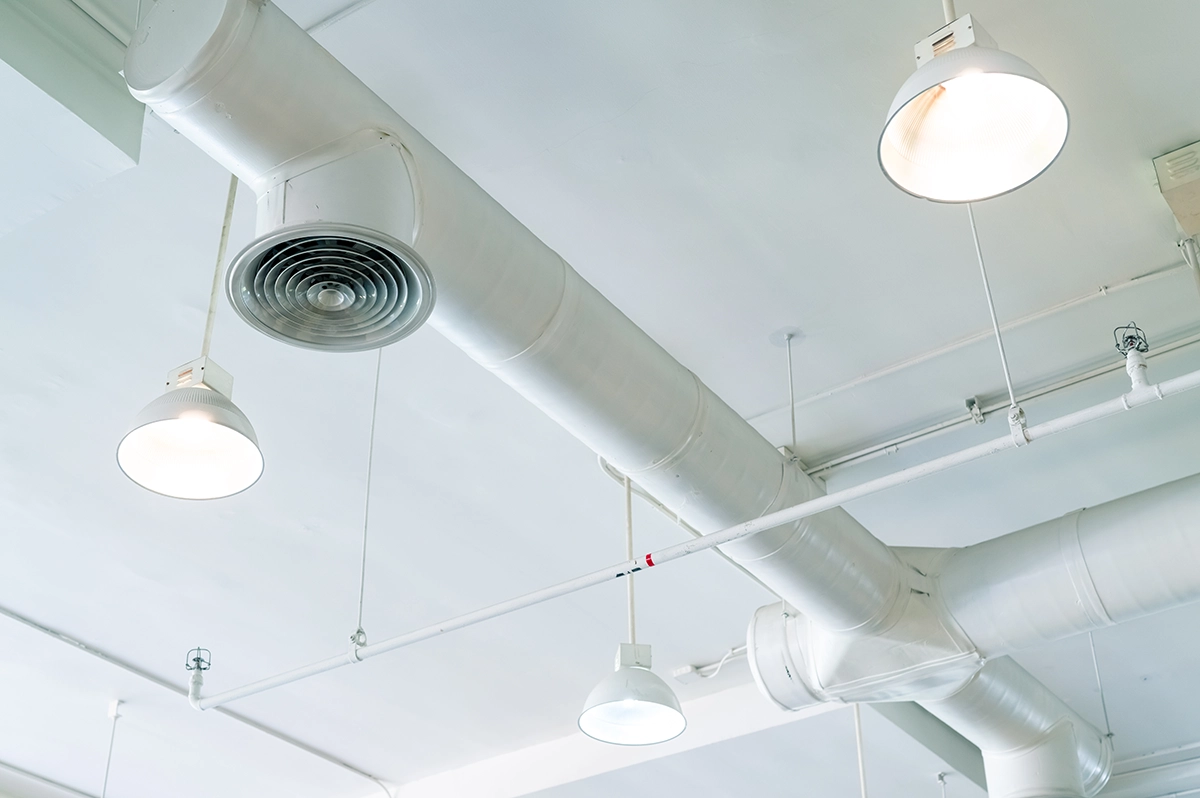Automatic Opening Vent: Keeping You Safe and Buildings Clear
In an ideal world, fires would be a thing of the past. But as long as emergencies exist, safety measures become paramount. An Automatic Opening Vent (AOV) plays a crucial role in fire safety by mitigating the impact of smoke and heat buildup during a fire. Here we will dive deep into AOVs, explaining what they are, why they’re essential, how they function, and the recommended testing frequency.
What is an Automatic Opening Vent (AOV)?
An AOV, also known as an automatic smoke vent or natural smoke and heat exhaust ventilator (NSHEV), is a rooflight or window that opens automatically in response to a fire. They are part of a broader smoke control strategy that aims to:
- Extract smoke and heat: By allowing hot air and smoke to escape through the vent, AOVs make evacuation easier and safer for occupants and improve visibility for firefighters.
- Reduce flashover risk: Flashover is a rapid temperature increase in a compartment that ignites all combustible materials. AOVs help prevent this by venting heat, potentially saving lives.
- Maintain a smoke-free layer: AOVs strategically placed near the ceiling allow smoke to rise and escape, keeping lower levels clearer for safe passage.
AOVs are typically electrically operated and integrate with a building’s fire alarm system. When a smoke detector triggers, a signal is sent to the AOV control panel, which activates the opening mechanism.
There are different types of AOVs, each suited to specific needs:
- Cupolas: These dome-shaped vents are ideal for flat roofs and offer excellent smoke and heat extraction.
- Ridge Vents: Installed along the peak of a roof, ridge vents provide a discreet and aesthetically pleasing solution for smoke ventilation.
- Vertical Opening Vents: These vents are often hinged on the side and open vertically, suitable for pitched roofs.
- Window AOVs: These integrate with existing windows and transform into automatic smoke vents during a fire.
Why Do You Need an Automatic Opening Vent?
While not mandatory in all residential buildings, AOVs are crucial for specific structures due to several reasons:
- Improved Fire Safety: AOVs significantly enhance fire safety by removing smoke and heat, making escape routes clearer and reducing the risk of flashover.
- Life Safety: Clearer escape routes and improved visibility for firefighters translate to quicker evacuation and potentially saved lives.
- Reduced Fire Damage: Efficient smoke and heat venting can minimise structural damage to the building, reducing repair costs after a fire.
- Building Regulations: In many regions, building codes mandate AOV installation in commercial and multi-occupancy buildings, such as schools, hospitals, and office complexes.
A properly functioning AOV system can make a life-or-death difference during a fire.
How Does an Automatic Opening Vent Work?
An AOV system comprises several key components:
- Smoke Detectors: These strategically placed sensors detect smoke particles in the air and trigger the AOV activation sequence.
- Control Panel: This central unit receives signals from smoke detectors and commands the opening mechanisms to activate AOVs.
- Opening Mechanisms: These motorised or pneumatic systems physically open the vents when triggered.
- AOV Units: These are the rooflights or windows that open automatically to release smoke and heat.
Here’s a breakdown of the AOV activation process:
- Fire Detection: A smoke detector senses smoke particles during a fire.
- Signal Transmission: The detector sends a signal to the AOV control panel.
- Activation Trigger: The control panel processes the signal and triggers the opening mechanisms.
- Vent Operation: The motorised or pneumatic systems open the AOV units, allowing smoke and heat to escape.
Some AOV systems can also be manually operated from a designated control point for additional safety measures.
How Often Should Automatic Opening Vents Be Tested?
Regular maintenance and testing are critical to ensure AOVs function flawlessly during a fire. Here are the recommended testing frequencies:
- Daily: A visual inspection should be conducted to confirm there are no obstructions or physical damage to the vents.
- Quarterly: A functionality test should be performed to verify the AOVs open and close smoothly upon receiving a test signal from the control panel.
- Annually: A comprehensive service should be conducted by a qualified professional. This service includes a thorough inspection of all components, cleaning and lubrication of mechanisms, and verification of system operation with a smoke simulation test.
Following these testing guidelines ensures the AOV system remains reliable and ready to perform when needed most.
Conclusion
Automatic opening vents are a vital component of fire safety in buildings. By efficiently removing smoke and heat, AOVs create safer evacuation conditions, reduce fire damage, and potentially save lives. While the initial installation cost might be a consideration, the benefits of AOVs far outweigh the investment. Remember, fire safety is not an expense; it’s an investment in the well-being of occupants and the longevity of the building.
Here are some additional points to consider:
- Building Use: The type of occupancy within a building can influence the AOV system design. For example, high-risk facilities like factories or chemical storage units might require specialised AOV configurations.
- Integration with Fire Alarm System: A seamless integration between the AOV system and the fire alarm system is crucial for a prompt and coordinated response during a fire.
- Maintenance Importance: Regular testing and maintenance are essential to ensure the AOV system functions optimally. Partnering with a qualified service provider for regular inspections and maintenance is highly recommended.
By understanding the importance of AOVs, their functionality, and proper maintenance practices, building owners and managers can contribute significantly to a safer environment for occupants and firefighters alike. In the face of a fire, every second counts, and AOVs can play a critical role in mitigating the impact of emergencies and potentially saving lives.
For more information on Automatic Opening Vents contact Total Safe UK.

